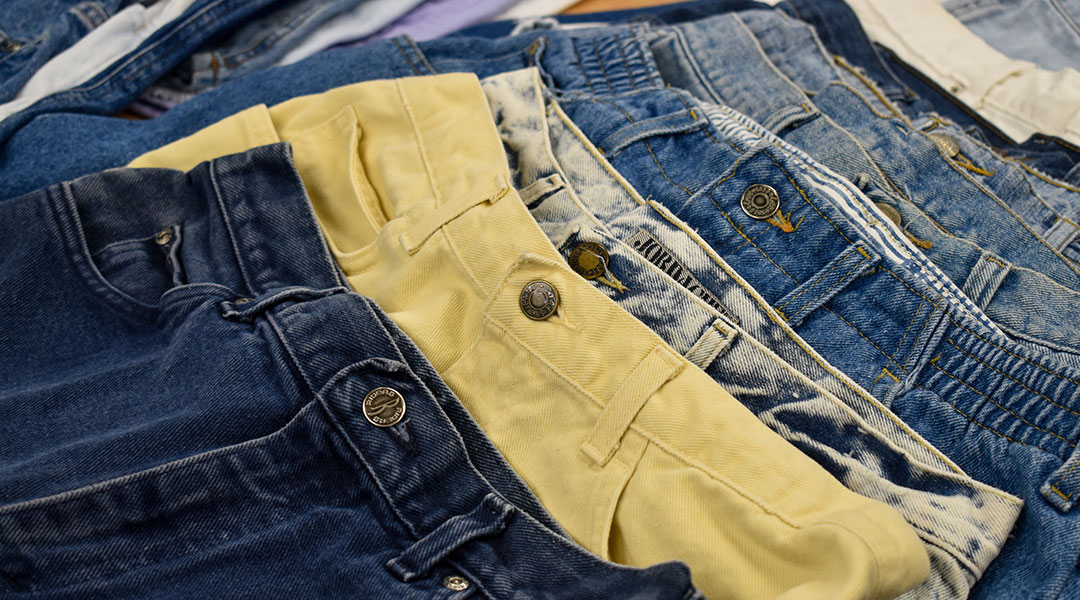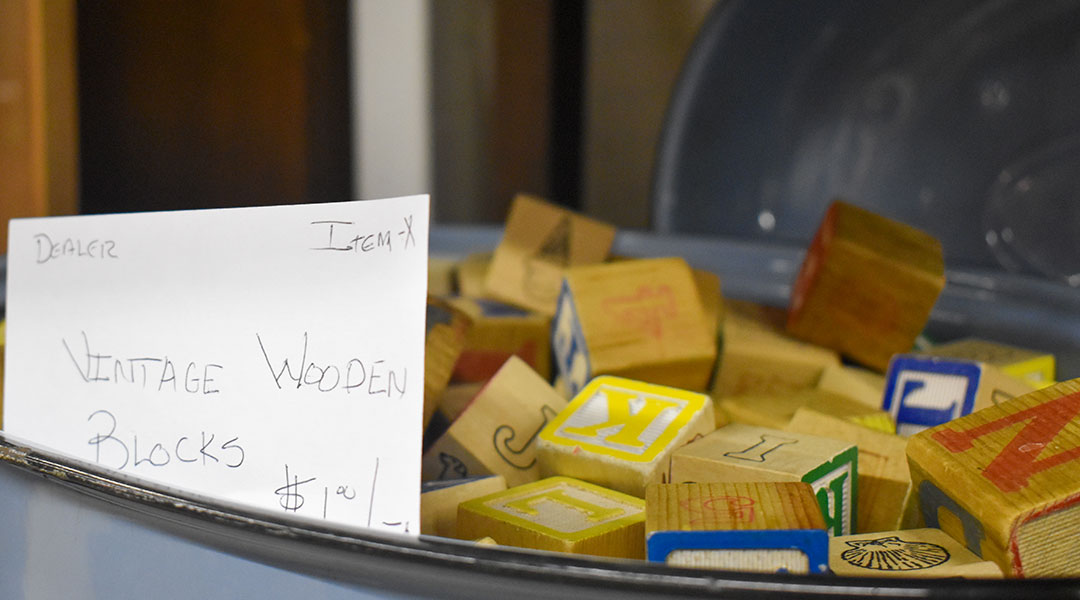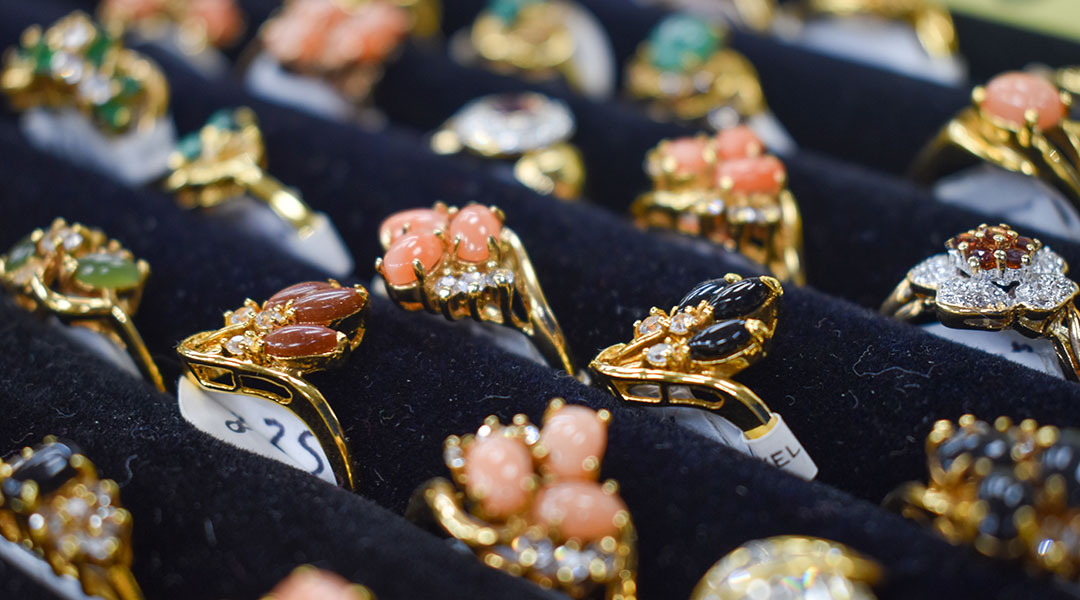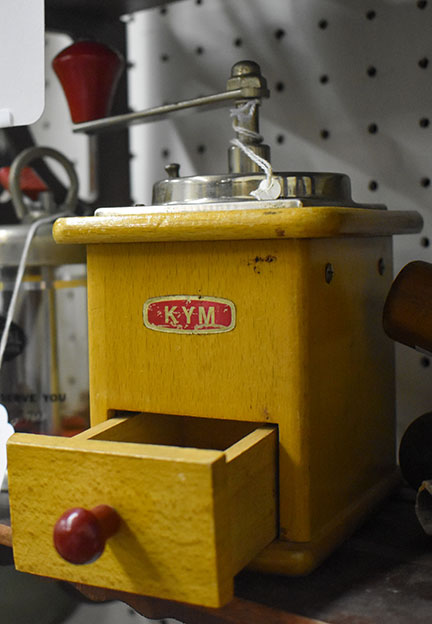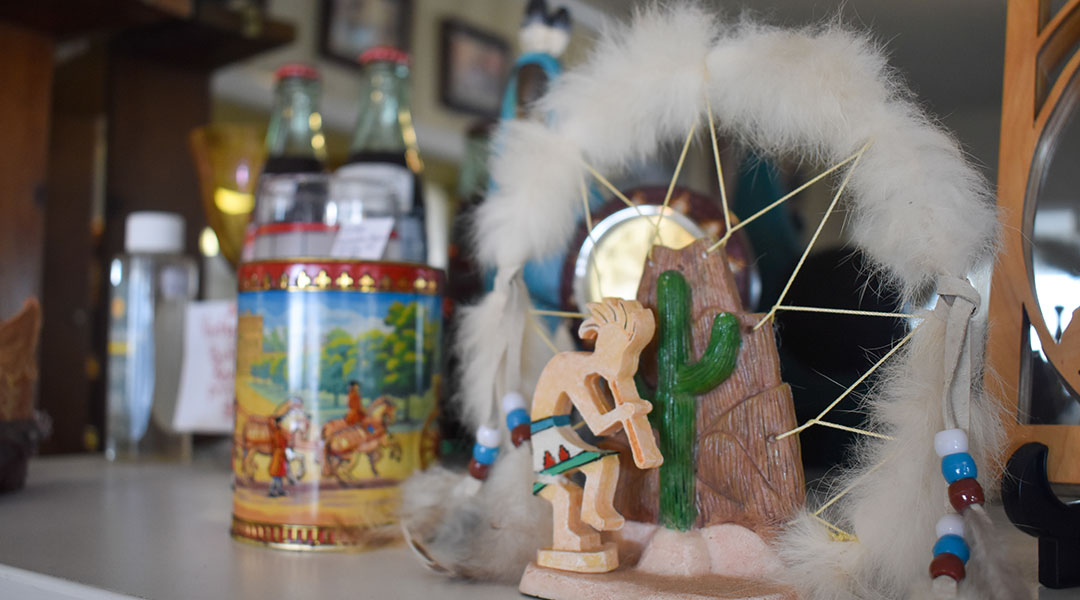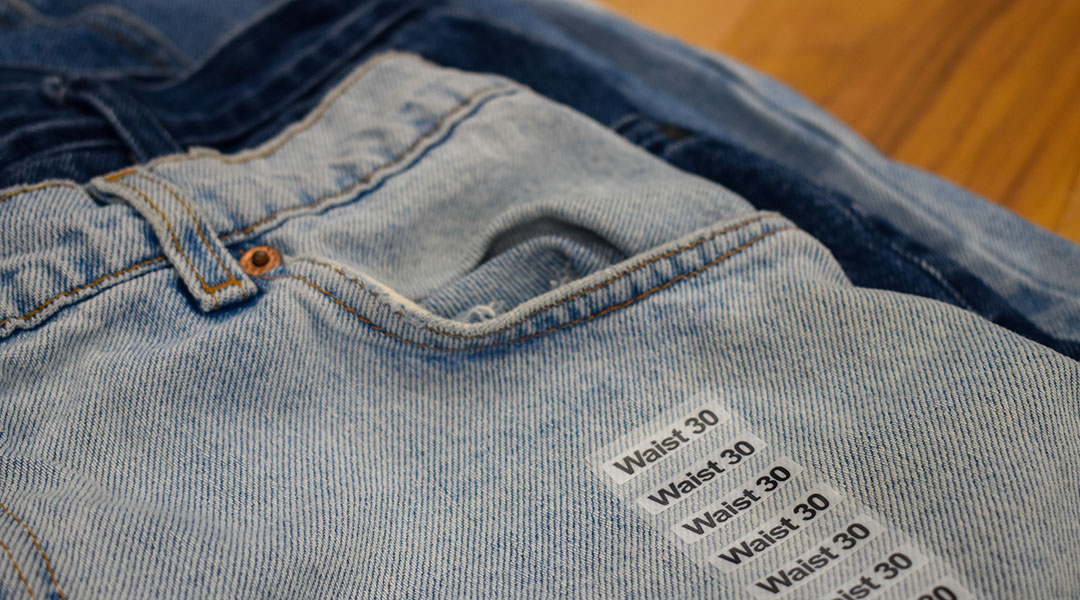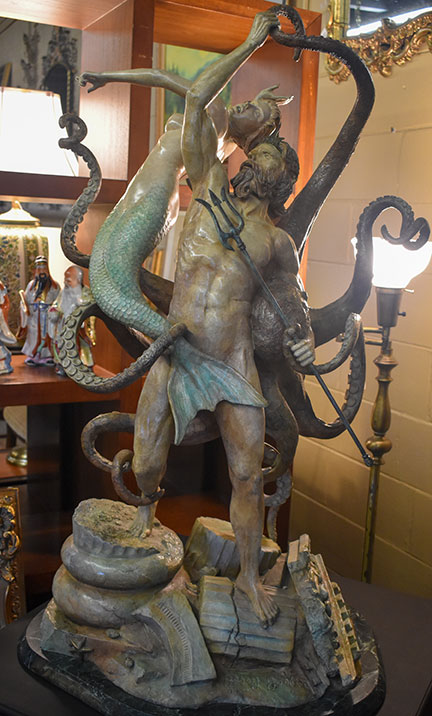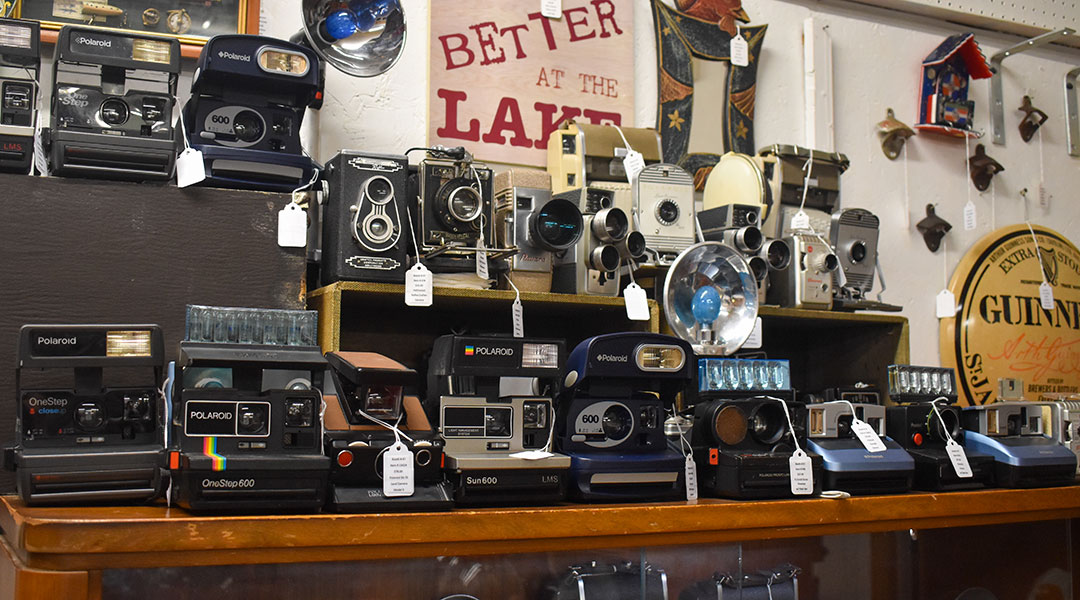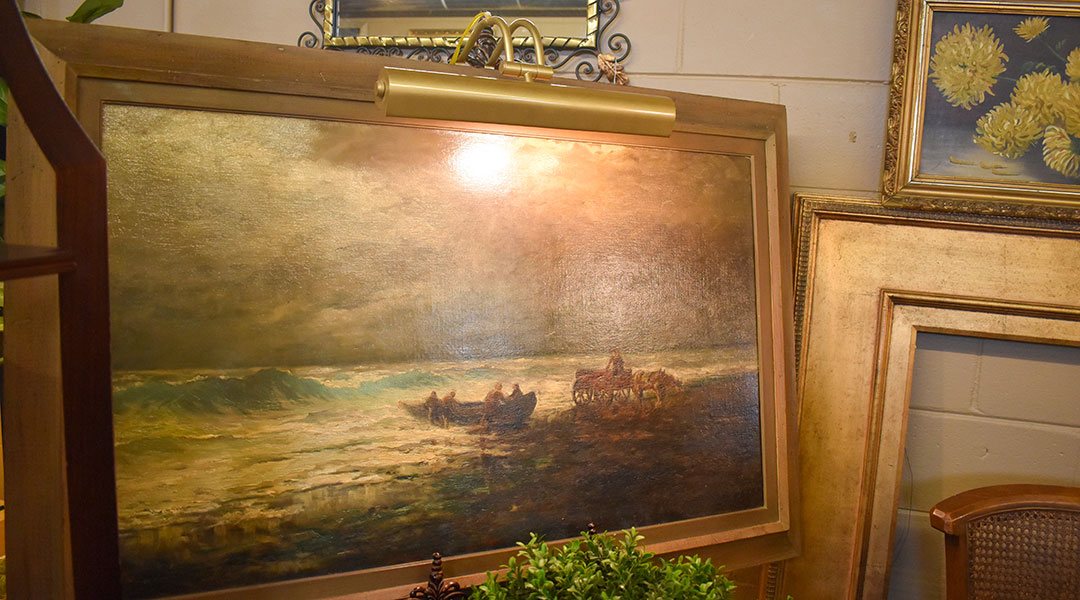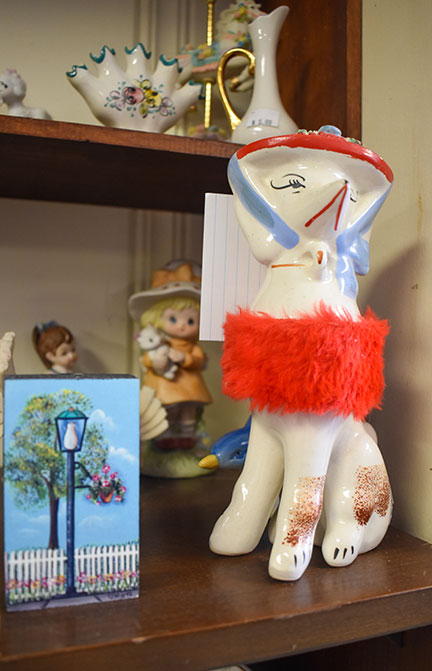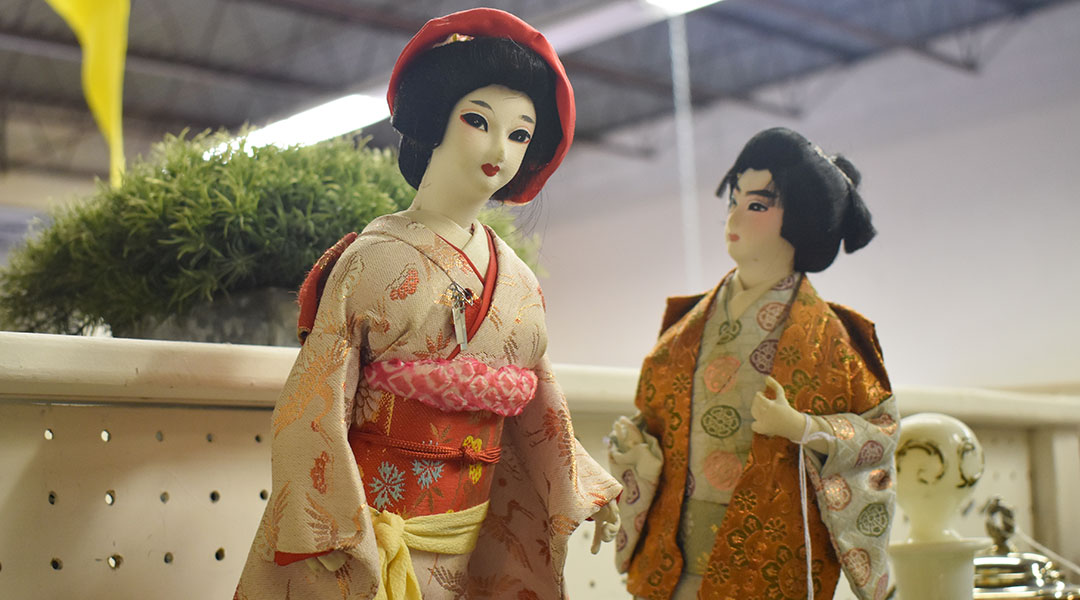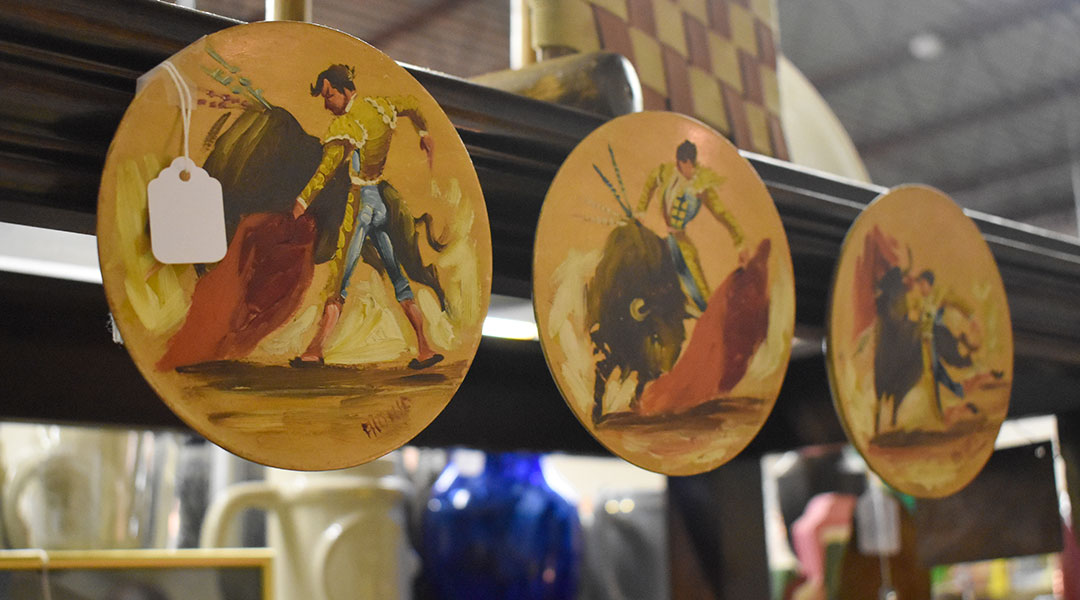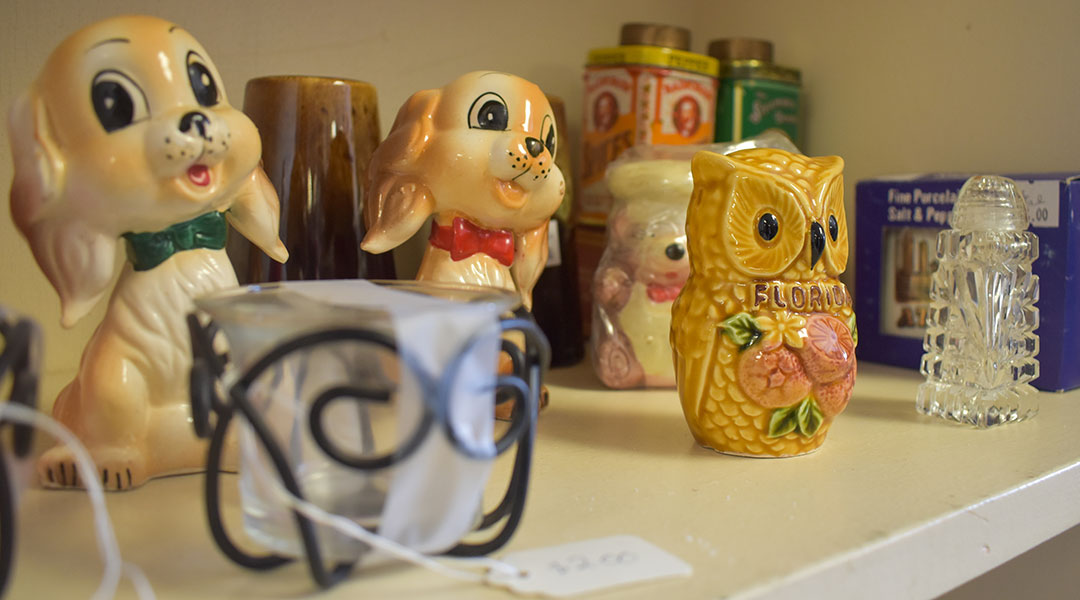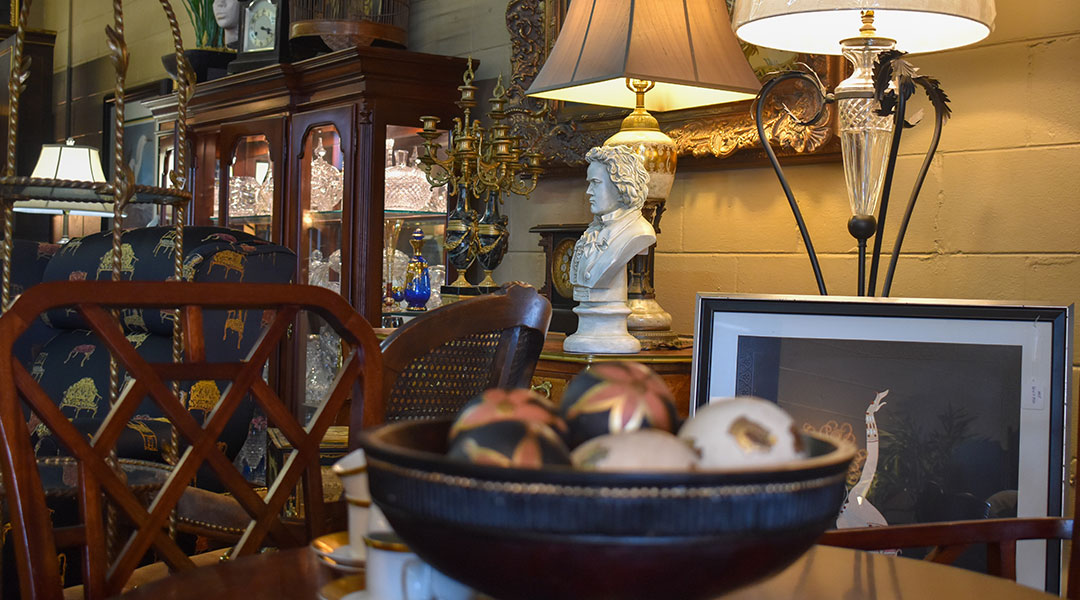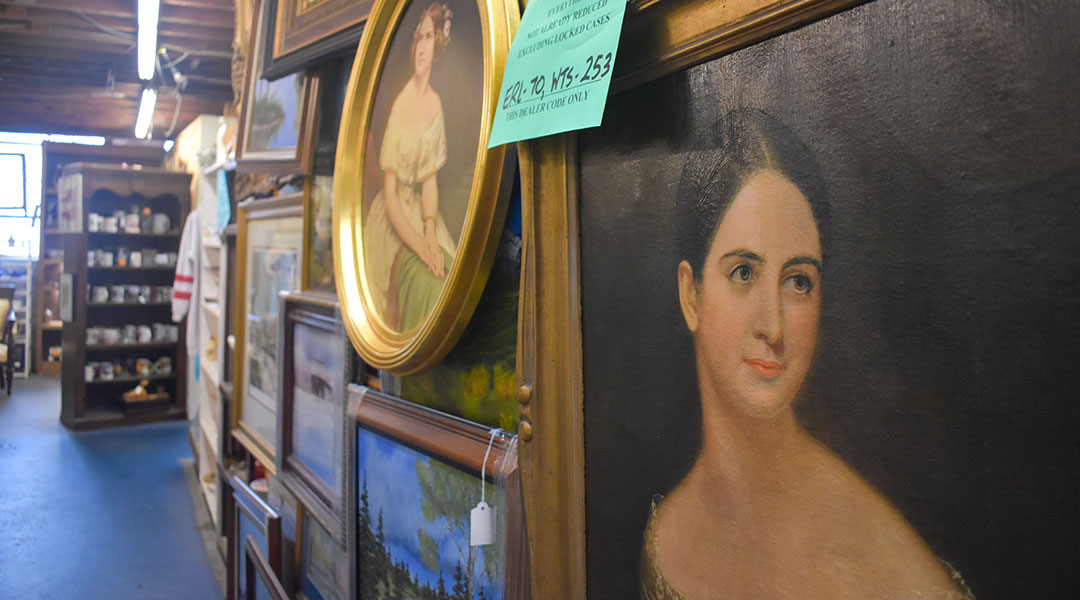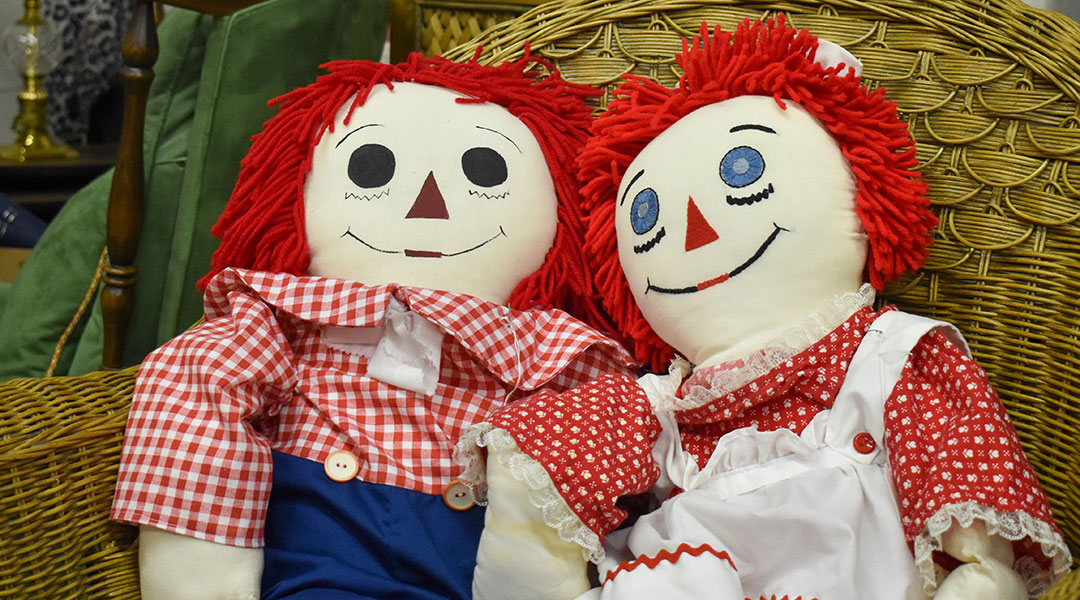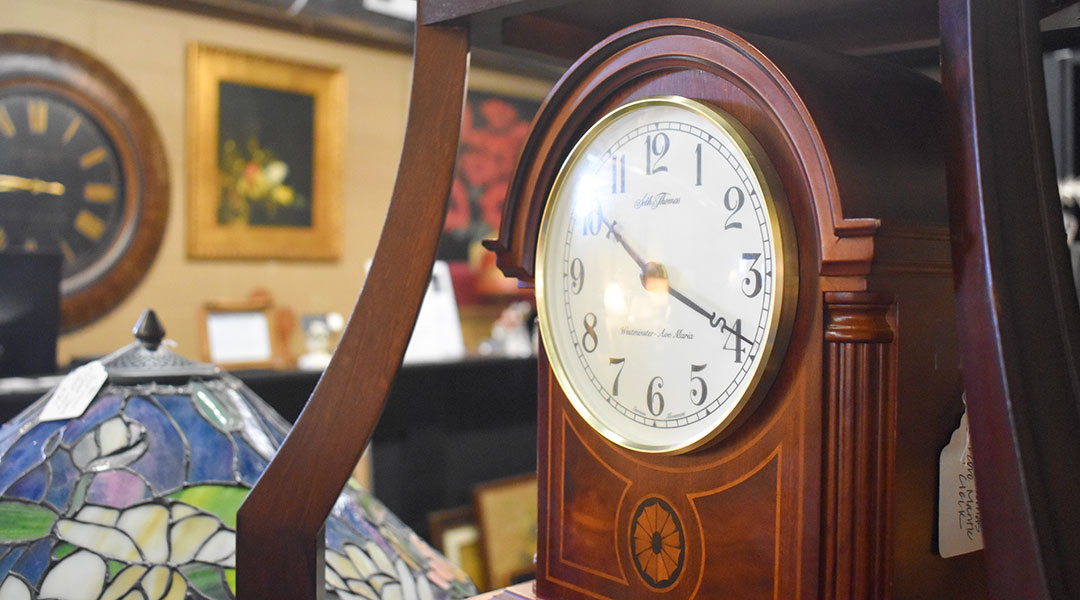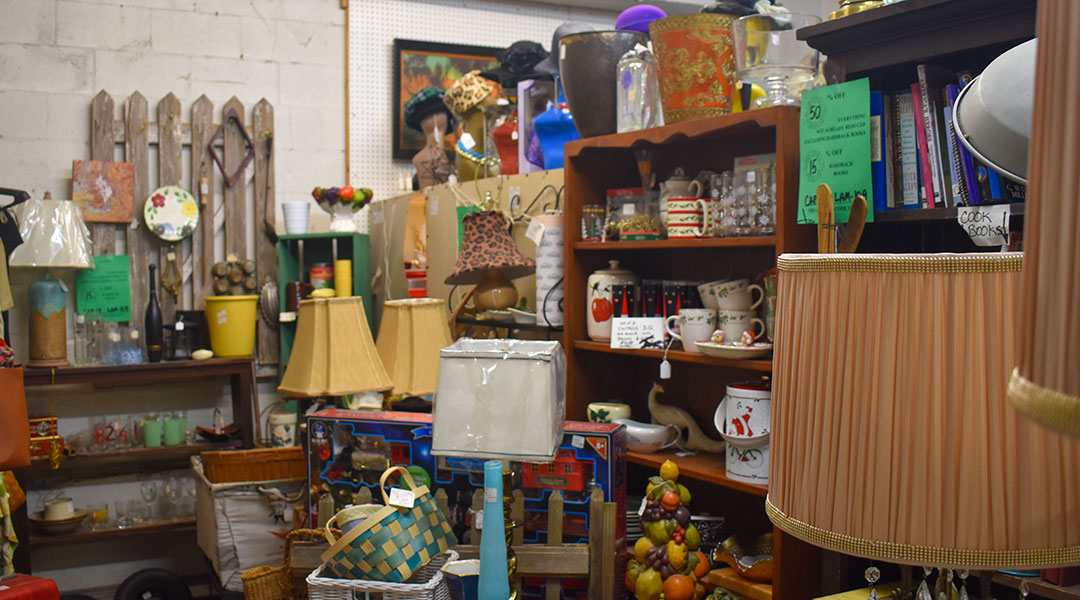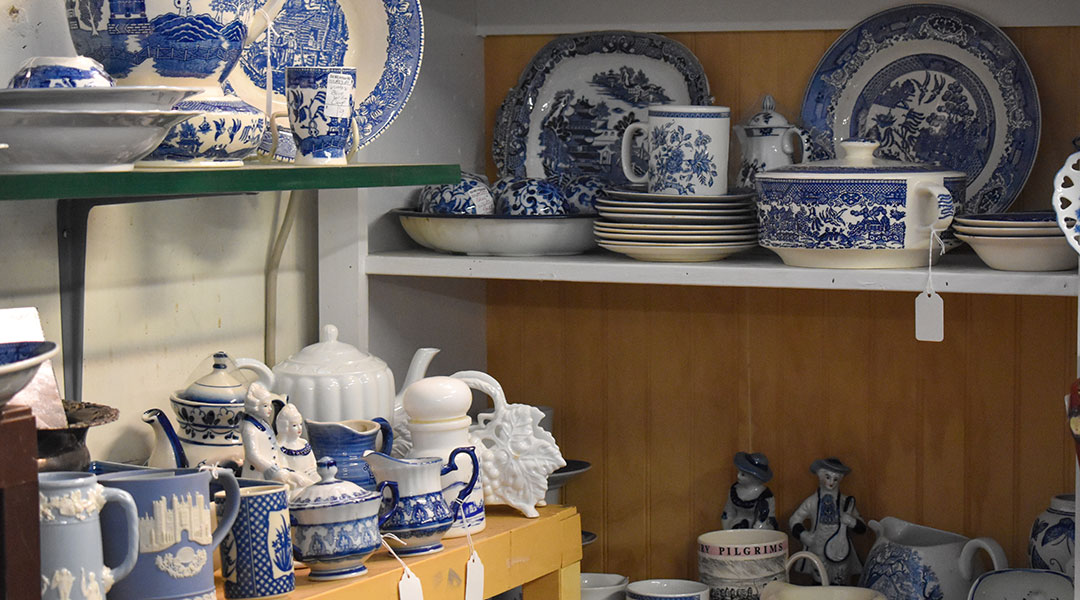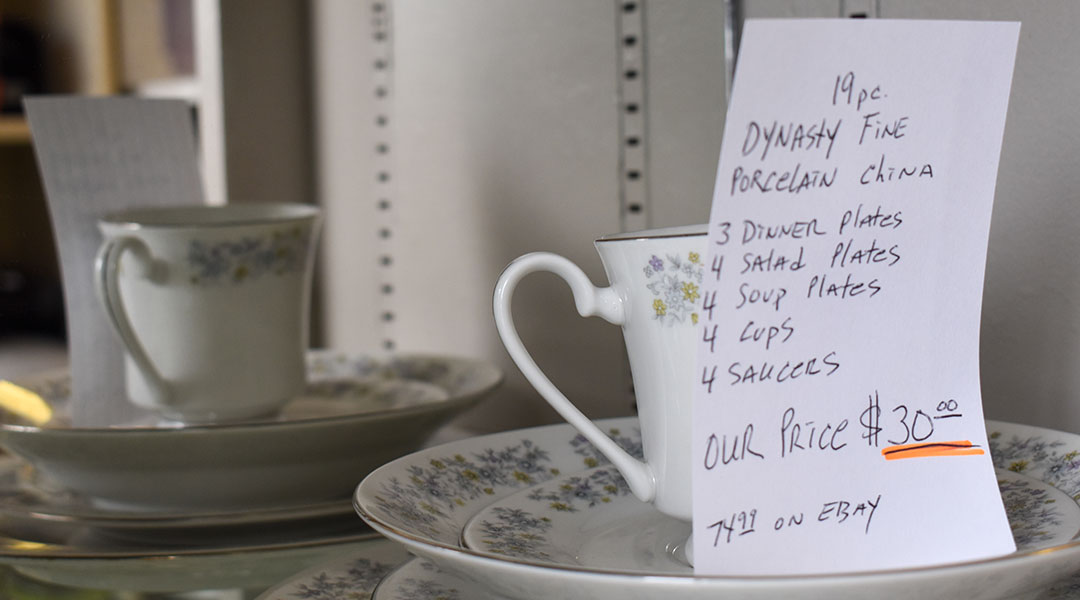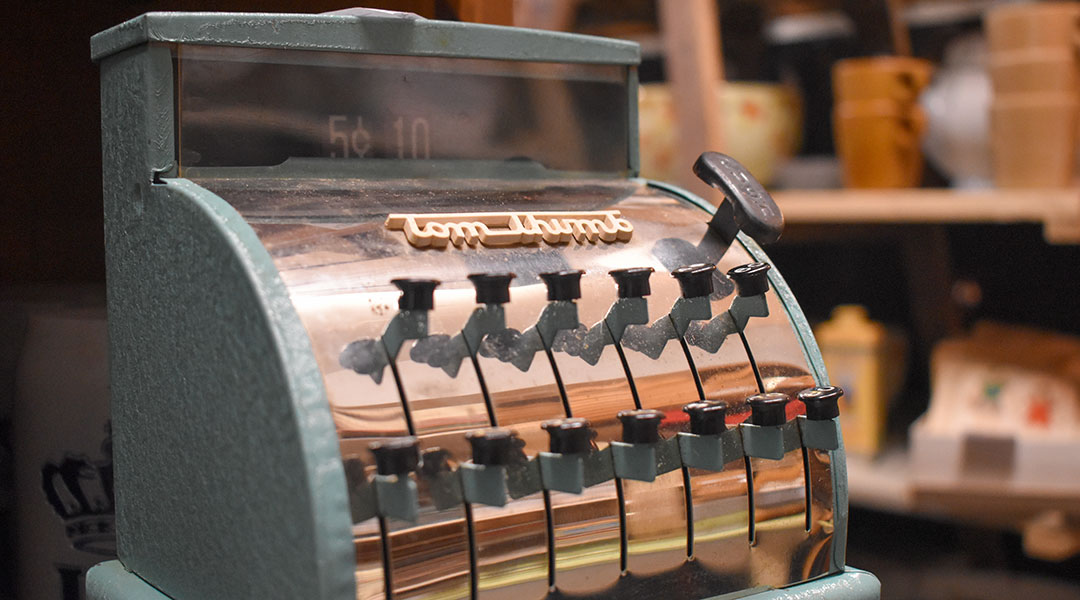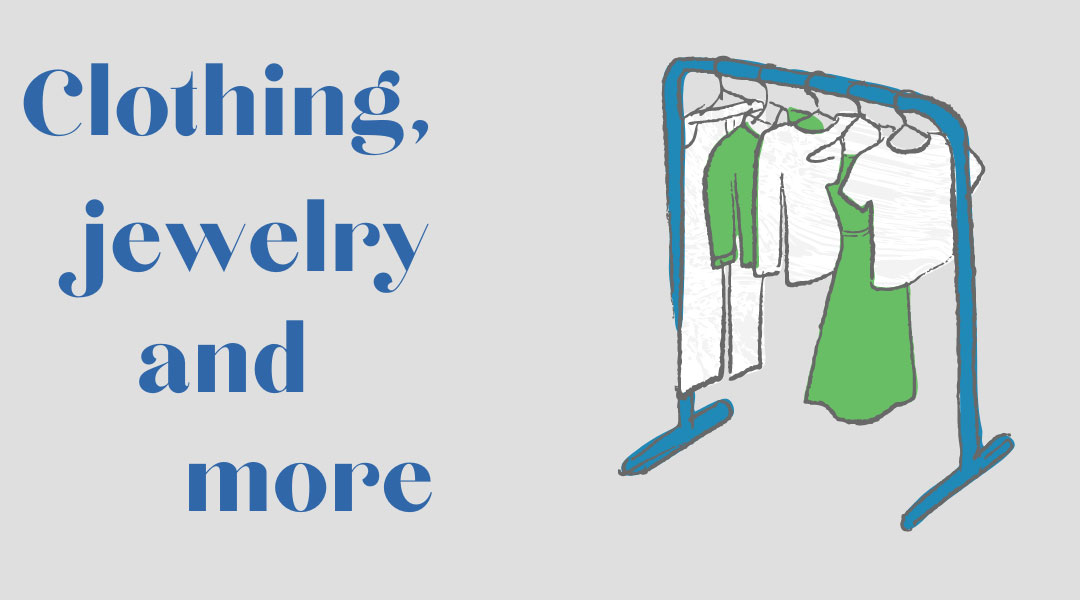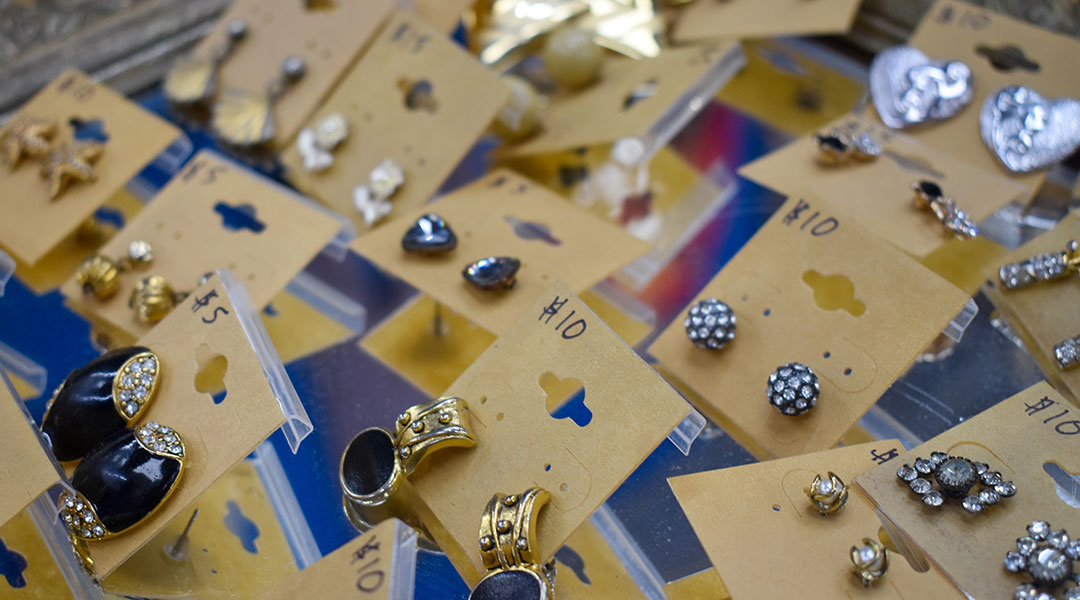The culture around thrifting seems to have changed in recent years. Columbia residents say this change could be coming from sustainability awareness on social media or efforts to use clothing as a tool for self-expression. (Photos by Emily Okon. See photo gallery below.)
There’s a world of thrifting and antiquing hidden away in the city of Columbia.
That world is full of the odds and ends found throughout history, including clothing from different eras. Each item has a past, whether it’s known or created by the imagination of the buyer.
Lately, the stigma that once surrounded thrifting seems to have faded away as Columbia’s community begins to embrace second-hand shopping.
Thrifting is seen as an economical and environmentally friendly way to shop for vintage and antique items that could cost more than what it sold off the rack.
“At first I thrifted because that’s all I could afford,” said Jan Kaneft, a Midlands resident. “Then, afterward, it was an appreciation for history and just old things. I love antiques. I love old things and to me, they’re more beautiful.”
Changes in the trend
Pannerpete Vintage opened its storefront in the heart of Five Points in mid-March.
The grand opening followed the rapid growth the vintage clothing business saw after serving the city of Columbia for five years at the weekly Soda City Market.
Pannerpete owner Katie Roberts has been collecting and selling second-hand items for what feels like most of her life.
When her collection began filling the closets and storage containers in her home, she knew it was time to find a more permanent home.
“I wasn’t getting to work with the stuff the way I wanted to because it was packed away,” Roberts said.
Opening a storefront allowed her not only to work with the items easily, but it also has made her more accessible to the public.
“It gives more people the opportunity to shop,” she said, since Soda City is open one day a week for limited hours.
Roberts has noticed changes in her customer base and the increase in popularity of second-hand items as Pannerpete Vintage has thrived.
“Originally … my main customers were usually younger college students,” she said. “That has really grown in the past few years. People of all ages will shop with me.”
Her vintage items are not meant for just one group of people, but for all ages and genders.
“A month or so ago, a lady who is probably in her 70s or 80s bought like $100 worth of stuff for herself, and she was very excited,” Roberts said.
Her goal for Pannerpete is to have a little bit of everything while catering to the vintage needs of her customer base. Clothing and furniture only can be considered vintage if it is more than 20 years old.
Having a permanent space also allows Roberts to offer a wider variety of sizes.
“Like, right now, my denim ranges from a 24-inch waist, which is pretty small, up to the 40s,”she said.
Gabby Ziegler, a University of South Carolina student, has been thrifting since before high school.
She recalled being hesitant to reveal where her items were purchased earlier in her life.
“It wasn’t really trendy,” said Ziegler from Spain, where she’s studying abroad. “And, when people asked me where I got something, I was hesitant to say Goodwill because they would still kind of sneer or give me a weird expression. They’re like, ‘Oh, really?’ Kind of surprised.”
Darlene Rollinson has been working for 4 Paws Thrift Store for more than 11 years. She is seeing more business now than ever.
“I think a lot of people have just come to the conclusion that they don’t have to spend a lot of money, and people are sort of into the retro thing nowadays,” Rollinson said.
Changes worldwide
While there’s been a shift in the stigma that once surrounded thrifting in the United States, that stigma is still present across the globe.
Ziegler tested the waters of second-hand shopping in Spain and found something she did not expect.
“They were selling all American brands,” Zeigler said “It was like the 70s high-waisted denim and Wrangler. … And all the men’s clothing was American men’s outdoor wear and vintage jackets and … American sports teams. It’s very jarring to see American brands in a different place.”
Zeigler feels that many second-hand shops in Spain lack originality.
“People have lost their sense of style,” Zeigler said. “… All the people in the vintage store, they were all dressed the same, and they were looking at the same non-unique things because that’s all they sold.”
Thrifters such as Ziegler and Roberts view second-hand shopping as an “art form” and a way of life that benefits them and their surroundings.
“It’s a little bit like an adventure – finding a new piece and being able to express yourself through that, … knowing you’re the only one that has something that looks like that. I really like the individuality of it,” Zeigler said.
Antiques & trinkets
Individuality isn’t just expressed by clothing choices, but also by the decorations and items in a home.
“I have a repeat purchaser who is a doctor’s wife,” said Doris Edwards, owner of Attic Fanatic, a consignment shop in West Columbia. “She made a remark to me one day about how they go to a lot of dinner parties with her husband’s peers and their homes, well, all their homes look the same.”
Edwards has been consigning for six years, and every piece that enters her shop is different than the one before.
Before she specialized in one-of-a-kind items, she was a real estate agent with a passion for vintage furnishings.
“I was always attracted to antique stores,” Edwards said. “I think it’s sort of in the blood. It’s something that I’ve always loved. This is my happy place.”
Attic Fanatic also is a happy place for those hunting for specific items that may not catch everyone’s eye but are meant for the right person at the right time.
One item that has yet to catch a customer’s eye is a painting by George Herbert McCord, a New England artist from the 1800s. Edwards has had the painting in the store for nearly three years.
Nevertheless, she keeps the item in the store with the hope of eventually finding the right buyer.
In Cayce, Emily Collins is just one antiquer who frequents the cluttered halls of Old Mill Antique Mall.
“I found this really cool piece of furniture here a while back,” she said. “It’s a mid-century table-lamp duo.”
Jan Kaneft, a returning customer at the same mall, has styled her home to fit her personality.
Kaneft has been antiquing for nearly 30 years and has always been attracted to the electric feeling she experiences when finding new-old items.
“At first it was because that’s all I could afford,” she said. “Then, afterward, it was an appreciation for history and just old things.”
Many people in the Columbia area feel the same, including Eylln Nester, a local antique dealer.
“I like going and hunting for particular things,” Nester said. “You know, certain things that you can collect, and then accidentally, you find treasure.”
Benefits of second-hand shopping
The green motive for consumers drives them to second-hand shops, too.
Many of Edwards’ items at Attic Fanantic are chosen and priced especially for the buyer who may be looking for something specific.
But she values sustainability.
“I took a trip to a dump once and I was just shocked at what I saw there,” Edwards said. “Just miles and miles of trash. I thought, ‘My gosh, we have so much quality, decor, furniture, and clothing. It should be reused if at all possible. Let’s try to do our part to be more responsible towards the environment.’ ”
More and more consumers are doing just that by shopping second-hand.
“I think people are also becoming more conscious about how damaging fast fashion can be to the environment,” said Pannerpete’s Roberts.
Well-known fast fashion brands such as Shein and Fashion Nova manufacture clothing at record rates and then sell items at standard prices, but at a lower quality, Roberts said.
The fashion industry has faced fast fashion as a concept for decades, as soon as new technology started making textile production quicker and cheaper.
“It kind of falls apart, and it’s usually more expensive than, like, what I have here,” Roberts said.
Those brands are not the only players in fast fashion. Popular American brands such as American Eagle, Adidas, Abercrombie & Fitch and Victoria’s Secret now are all considered to be a part of this industrial trend.
Ziegler blames social media for the increase in fast fashion.
During the COVID pandemic, social influencers used apps such as TikTok to reach millions of viewers with day-in-the-life videos.
Often, those videos featured products that were not always affordable for everyone, so other companies began producing cheaper knock-offs, Ziegler said.
“People feel like they need to change their entire wardrobe and just consume a lot more cheaper clothing,” Zeigler said. “It’s really, really interesting how it’s changed fashion culture.”
Cheaply made, mass-produced items can quickly eventually end up in landfills, of course.
In 2018, more than 17 million tons of textile waste were reported in municipal garbage facilities, according to the Environmental Protection Agency.
Textiles made up 5.8% of all waste reported in that year.
The EPA expects the number to only increase in this decade, much to the frustration of Roberts and Ziegler.
Wooden alphabet blocks were first made in the 16th century as a toy to teach students the alphabet. The popularity of these blocks can be attributed to John Locke after his essay about education was published.
New old stock items are items that were made in the past but were never sold. These items can almost always be found in their original packaging. These new old stock rings can be found at Pannerpete Vintage.
This German coffee grinder is from the mid-1900s. This item can be found at the 763 Meeting Street Antiques.
This decorative piece features a Kokopelli, a hump-backed flute player from southwestern Native American legends.
Katie Roberts, owner of Pannerpete Vintage, has always aimed to be as diverse as possible. The opening of her store-front has allowed her to expand her size range in both men and women’s clothing.
Priced for more than $12,000, this sculpture by Jerry Joslin resides in Attic Fanatic located in West Columbia. This is a bronze casted sculpture and is titled Ruins of Atlantis.
Antique stores aren’t just for clothing and furniture but also for hobbies and passions. 763 Meeting Street Antique Mall is home to these vintage cameras.
This unique painting has found its temporary home in Attic Fanatic. The painting was created by George Herbert McCord, a painter from the 17th century.
Oddities such as crazy statues can be found in nearly every antique and thrift shop in Columbia. This fancy dog can be found at 4 Paws Thrift Store.

